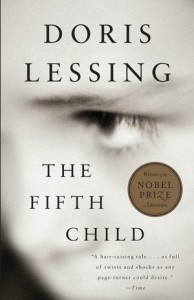How do readers respond to having plot points, character choices or other story elements explained to them? Not well. If a reader finds your voice condescending, chances are they will abandon your book. How to explain to readers entails giving them just enough information without telling them too much. The late, Nobel-winning author Doris Lessing effectively strikes this balance and her fiction can teach us a great deal about how to explain to readers.
Who was Doris Lessing?
Born in present-day Iran and raised in present-day Zimbabwe - the countries were then called Persia and Rhodesia respectively - Doris Lessing published her first novel, The Grass is Singing, in 1950 when she was 30 years old. She was prolific, writing more than 50 books over the course of her career. She penned both realistic novels as well as fantasy and science fiction, and in 2007, she was awarded the Nobel Prize for Literature.
Through Lessing's own discussions of her writing, her fiction, and what others say about her, we can learn more about explaining in fiction.
Show, don't tell
Although she shied away from being described as a feminist, Lessing was embraced by many feminists, and in novels like The Golden Notebook, she broke new ground in exploring the lives of women. But Lessing didn't waste time telling readers what the lives of women were like in abstract terms: She showed them in her fiction. Her famous short story 'To Room 19' is one of the most compelling examples.
The protagonist of this story appears to have everything: a career, a loving family and an interesting social life. All the same, she feels constrained by society, and she begins renting a room in a hotel so she can sit for a little while each day and have her privacy. By showing the reader what the woman's life is like and how she behaves as she undergoes her breakdown, Lessing demonstrates that showing and not telling is the most powerful way to explain such a nuanced idea.

Raise questions that allow the reader to explain
Lessing felt that "a writer's job is to provoke questions." In her novel The Fifth Child, Lessing asked what would happen if a truly terrible child were born into a close, loving and functional family. The story raises questions about nature versus nurture and whether the family truly plays any role at all in how a child turns out.
Lessing leaves much unexplained on the surface:
- Why is the character Ben such a strange child?
- Is he simply a personality that doesn't fit with his parents and siblings or something more ominous?
Lessing herself referred to the book as a horror novel. In raising questions in the way that she does, she guides the reader toward a certain set of conclusions without resorting to clunky explanations that spell things out about Ben and his worrying attributes.
Use first person to write about unfamiliar characters
A writer must understand in order to explain things to readers, and this includes explaining characters. Lessing has said that "it’s amazing what you find out about yourself when you write in the first person about someone very different from you." By fully inhabiting characters, you can draw on aspects of yourself and create a more compelling cast for your novel. This helps you create a character who makes sense to the reader even if the reader does not necessarily identify with the character.
Observe everything closely to improve skill at showing rather than telling
Understanding and being able to explain human nature to readers is an important skill for a writer. Lessing credits a difficult childhood for some of her success: "...children who have been forced into self-awareness early, have had to learn how to watch the grown-ups, assess them, know what they really mean, as distinct from what they say, children who are continually observing everyone - they have had the best of apprenticeships." It is not necessary to have learned this skill in childhood in order to become a keen observer. You can begin to learn at any time how to observe people productively.
Writing exercises can help with this. You could try observing people in public or people that you know fairly well such as coworkers. Notice how what they say may be different from what they really seem to mean. Try writing about what you observe about how people's words, actions and desires are not consistent all the time. Consider how you can use these observations to help explain characters and their actions to your readers.
Try another genre
Sometimes the genre you are most familiar with is not ideal for explaining to readers your most pressing concerns or thoughts. Lessing fearlessly turned to science fiction settings when realist fiction did not provide the tool she needed. Her series of five science fiction novels, Canopus in Argus: Archives, deals with societal and cultural changes over enormous spans of time.
Lessing found that readers of her realistic and science fiction novels did not always overlap, but she did not let this stop her from looking for new ways of explaining. Due to the importance of her contribution to the genre, she was a guest at a World Science Fiction Convention in the UK in the 1980s.

Explain with 'inner space'
In books such as Briefing for a Descent into Hell and The Four-Gated City, Lessing set out to explain human consciousness and the experience of mysticism to a degree that she felt she could not in her more realistic novels.
The latter is the fifth in a series of otherwise realistic books about a woman's life and is set in a kind of dystopian Britain while the former deals with madness and the insights it may bring.
As Lessing did with these books and her science fiction, be bold enough to step outside your comfort zone if your usual style, approach or genre does not permit you to convey the themes you most want to share.
Be dedicated
In a 1984 interview with The New York Times, Lessing asserted that "you can only learn to be a better writer by actually writing...writing is hard work and...you have to give up a great deal of life, your personal life, to be a writer." The ability to explain the plots, characters arcs and themes of your work to readers subtly will only come with practice.
Draw on your memories
In her essay "The Small Personal Voice," Lessing asked, "Why do you remember this and not that? Why do you remember in every detail a whole week, month, more, of a long ago year, but then complete dark, a blank? How do you know that what you remember is more important than what you don't?" Lessing encouraged writers to not only explain their memories but to explain to themselves why they had certain memories in the first place. Explaining the significance of personal memories can lead to explaining the significance of characters' memories. What do your characters remember and why? What does that explain to you and what can you then explain to the reader about those characters?
Understand that you cannot always explain
In an interview that she gave after winning the Nobel Prize, Lessing pointed out that "the reader makes up his or her mind and the writer goes along with it. There's nothing you can do, really, if they get something that you've written absolutely wrong. You're not then going to issue a sort of statement saying 'Oh dear, that's not right at all. What I really meant was something else.'"
In other words, even after you have explained as much as you think is necessary, some readers still might not understand. Don't let the possibility of misinterpretation daunt you. It can help to know that even a writer as great as Doris Lessing was not always understood.
Go for broke
When Doris Lessing died in 2013, the writer Margaret Atwood wrote an obituary praising her fearlessness. In addition to a lack of fear about being misunderstood, Lessing was also unafraid of being wrong. Atwood points to Lessing's short period of interest in Stalinist communism as one example. Writing at a time when modern feminism was just coming into its own and other political ideas were in flux, Lessing's novels reflect a process in which she was explaining ideas to both herself and to her readers as her own horizons continued to expand. The result is a rich, passionate and varied body of work.
Writers do a lot of explaining to their readers. They explain plot points and character motivations as well as themes and ideas. The best of these explanations are rooted in deeper processes such as understanding one's own memories and the motivations of others.
What is one specific aspect of explaining that you have learned from Doris Lessing's fiction?









